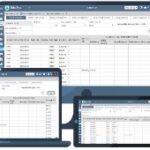
Gross pay includes salary or hourly wages, tips, commissions, overtime pay, bonuses, shift differentials, vacation pay, sick pay and holiday pay. Processing payroll is an essential part of operating any business that has employees. And the more employees you have, the more complicated the process can become. And, if things go wrong during the payroll process, they often come at a high price.
ADP is the largest and one of the most trusted payroll providers in the world. RUN is its small business solution and a good place to start if you’re a small business expecting to grow into a large enterprise. ADP RUN is a simple payroll and benefits administration platform with room to grow into enterprise plans with the main ADP platform. You simply choose a schedule—Gusto automatically suggests one for you—and confirm state tax details based on where employees are located.

This change initiates changes in tax withholdings, tax filings, payroll calculations, healthcare deductions and more, all without the manager having to lift a finger. It offers an employee portal online and through the Paycor mobile app, so employees can access pay stubs, documents, time-off requests, performance evaluations and employee development all from their phones. For example, you will find a company directory on the upper right-hand corner of the software that includes a list of all employees. Simply click on a name to see all of their payroll information, such as their gross and net pay, deductions, pay period and preferred payment method.
- Its users praise the platform for its user-friendliness and clean user interface.
- Ensuring compliance is not just about avoiding legal trouble—it also contributes to a fair and transparent workplace.
- To determine the best payroll services for small businesses, Forbes Advisor researched the industry and analyzed 23 different companies and their plans.
- As a business owner, you need to determine if the people you’re hiring should be treated as contractors or employees so you can file the correct paperwork and withhold taxes for any employees.
- Employees will likely want to participate, as everyone is directly affected by the process.
Best for Professional Employer Organization (PEO) Services
Most of this information can be found on the W-4 once an employee is hired, but you should check all paperwork to be sure. These portions are reviewed by internal Motley Fool editors to ensure accuracy what is weighted marginal cost? and validity. All data and metrics are sourced and verified by human editors without ChatGPT involvement. If you have more than 10 employees, you’ll need to request a quote from Paycor.
How to Manage Payroll—Payroll Tips for Small Businesses
However, I only had to click a box and click “submit” to send an invite to my employee. Still, the process did not require any technical knowledge and each step was intuitive to complete. PEOs like Justworks are a good fit for small businesses with complex hiring and potential business liability—for example, if you hire international employees or have a lot of turnover. It is also great for small businesses without in-house payroll or HR departments. Gusto is made for startups and growing small businesses with a mix of employee- and what is the weighted average 2023 robinhood contractor-based workforces. It is best for businesses that expect to eventually expand across state lines or even globally using a workforce with a mix of contractors and employees.
You’re not alone in managing your payroll
Processing payroll takes a lot of time and money, and when done manually, is easily susceptible to mistakes that can result in severe penalties. This is especially true for a growing business that has a steadily increasing number of employees. However, they report that there are a lot of features to consider when setting up the platform. Adding helpful features such as the IT or workflow modules can get pricey. In addition, there may be a lot of features small businesses may not need.
Once this salary level is set, it must be paid consistently with the appropriate amount of taxes withheld on both the employee (who, in this case, is the owner) and the business side. It’s a good idea to set up a bank account used only for paying employees and making tax payments that is separate from any other business bank accounts. It’s not required as part of the payroll setup process, but it’s a valuable bookkeeping practice that can help you keep accurate payroll records. Part of setting up payroll for small business requires knowing how much to deduct from each employee’s paycheck for benefits contributions. These can include statutory benefits and any supplemental benefits you might offer, such as health insurance, disability coverage, and retirement plans.
It comes with just one competitive price—$40 plus $6 per employee per month—that includes all services. It offers payroll tools for W-2 and 1099 workers and automatic tax payments and filing (with accounts receivable turnover ratio: definition formula & examples an error-free guarantee) and more. The timeline for processing payroll can vary depending on your payroll schedule, bank’s policies, and the employee pay method. For an added fee, some banks can accommodate real-time or same-day ACH.
While federal requirements don’t dictate how to store these records, the IRS recommends that you keep the data well organized — such as by fiscal year — and safe from threats like flooding. Some states have additional rules about how and where the records can be kept. For paper records, you can typically store them yourself or at a storage site. For electronic records provided by payroll software, back up the files on a separate device or platform.